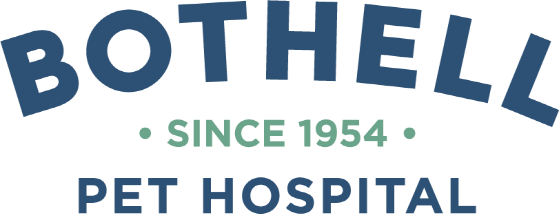Dog Bloat — Canine Gastric Torsion
Annie, a 12-year-old Weimeraner, was brought in by her owner Lori Hartoon for sudden onset lethargy and weakness. Annie had been completely normal the night before, but Lori woke to find Annie collapsed and making strange noises in the morning. Upon examination, Dr. Shannon Smith found Annie to be pale and weak with a very distended and painful abdomen. X-rays confirmed Dr. Smith’s suspicions – Annie had gastric dilatation-volvulus (GDV), commonly known as “gastric torsion” or “bloat”.
GDV is a sudden disorder most commonly seen in large, deep-chested dogs. In the early stages, the stomach fills with gas, causing a simple dilatation or bloat. A GDV is a progression of the bloat into volvulus, in which the huge, gas-filled stomach twists upon itself so that the entrance and exit of the stomach become occluded. This is a life-threatening emergency that requires surgery to correct.
Annie was immediately taken to surgery by Dr. Kim Hsu and Dr. Natalie Smith, a relief veterinarian working at Bothell Pet Hospital that day. The stomach was decompressed, returned to its normal position, and a portion of dead tissue was removed. A gastroplexy (suturing the stomach wall to the abdominal wall) was performed to help prevent future GDV.
Post-operatively, Annie was under close observation at Seattle Veterinary Specialists in Kirkland. We are happy to say Annie made a full recovery and today is back to her normal, rambunctious self.
The exact cause of GDV is unknown, but exercise after ingestion of large meals or water consumption has been a suggested contributing factor. Other factors that increase the risk of GDV include family history of bloat, eating rapidly, being thin or underweight, and having a fearful or anxious temperament. The risk of GDV and measures to prevent it may be discussed with one of our veterinarians.












